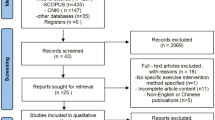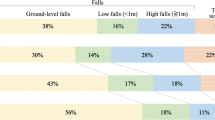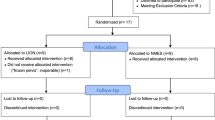Abstract
Patients with spinal cord injury or multiple sclerosis were surveyed for the presence of extreme foot deformities and spasticity. Pes cavus and claw toes were found in eight of 80 spastic spinal cord injury and two of 20 multiple sclerosis patients. Pes cavus and claw toes were not found in 29 flaccid spinal cord injury patients.
Pes cavus and claw toes were associated with flexor reflexes which could be elicited by pin prick proximal to the knee, suggesting extreme spasticity—and by low excitatory thresholds for the anterior tibialis as indicated electromyographically.
Complications of severe spasticity associated with spinal cord injury and multiple sclerosis include pes cavus and claw toes, mediated in part by spasms of the anterior tibialis.
Similar content being viewed by others
Log in or create a free account to read this content
Gain free access to this article, as well as selected content from this journal and more on nature.com
or
References
Adams, W (1873). Club foot, it Causes, Pathology and Treatment, 2nd ed., p. 94. Churchill, London.
Burman, M S (1938). Spastic intrinsic muscle imbalance of the foot. J. Bone Joint Surg., 20, 145–148.
Collier, J (1899). An investigation upon the plantar reflex, with reference to the significance of its variations under pathological conditions, including an enquiry into this aetiology of acquired pes cavus. Brain, 22, 71–99.
Dimitrijevic, M R & Nathan, P W (1968). Studies of spasticity in man. 3. Analysis of reflex activity evoked by noxious cutaneous stimulation. Brain, 91, 349–368.
Garland, H G & Astley, C E (1950). Hereditary spastic paraplegia with amyotrophy and pes cavus. J. Neurol. Neurosurg. Psychiat., 13, 130–133.
Giannestras, N J (1953). Dural and intradural compression as a cause of club foot. Clin. Orthop., 1, 28–32.
Guttmann, L (1970). Spinal shock and reflex behaviour in man. Paraplegia, 8, 100–110.
Hicks, J H (1953). The mechanisms of the foot. 1. The joints. J. Anat., 87, 345–357.
Ingram, A J (1971). Anterior poliomyelitis. In Campbell's Operative Orthopaedics, A. H. Crenshaw, ed. Mosely, St. Louis, Mo. Vol. 2, p. 1535.
Makin, M (1958). The surgical management of Friedreich's ataxia. Ann. Roy. Coll. Surg. Engl., 22, 1–10.
Plowright, O (1928). Familial claw foot with absent tendon-jerks and cerebellar disease. Guy's Hosp. Rep., 8, 314–319.
Rivera-Domínguez, M, Frisbie, J H, DiBenedetto, M & Rossier, A B (1979). Quantitated flexor response in acute spinal cord injury patients. Paraplegia, in press.
Saunders, J H (1935). Etiology and treatment of clawfoot. Arch. Surg., 30, 179–198.
Shahani, B & Young, R R (1971). Human flexor reflexes. J. Neurol. Neurosurg. Psychiat., 34, 616–627.
Sharrard, W J W (1973). The orthopaedic surgery of spina bifida. Clin. Orthop., 92, 195–213.
Sharrard, W J W & Grosfield, I (1968). The management of deformity and paralysis of the foot in myelomeningocele. J. Bone Joint Surg., 50B, 456–465.
Tyrer, J H & Sutherland, J M (1961). The primary spino-cerebellar atrophies and their associated defects, with a study of the foot deformity. Brain, 84, 289–299.
Author information
Authors and Affiliations
Rights and permissions
About this article
Cite this article
Rivera-Dominguez, M., DiBenedetto, M., Frisbie, J. et al. Pes cavus and claw toes deformity in patients with spinal cord injury and multiple sclerosis. Spinal Cord 16, 375–382 (1979). https://doi.org/10.1038/sc.1978.71
Issue date:
DOI: https://doi.org/10.1038/sc.1978.71
Keywords
This article is cited by
-
Quantitated flexor response in acute spinal cord injury patients
Spinal Cord (1979)



